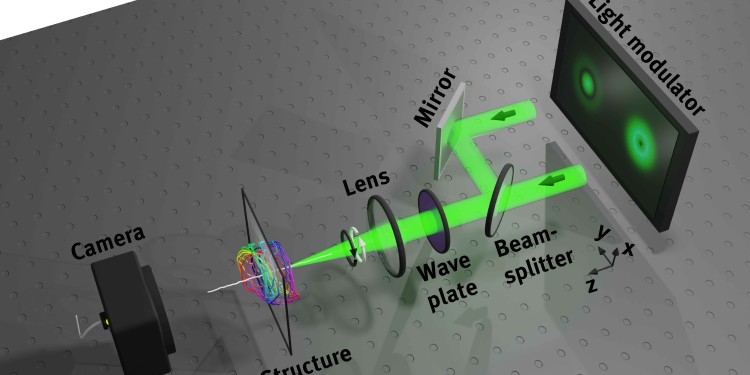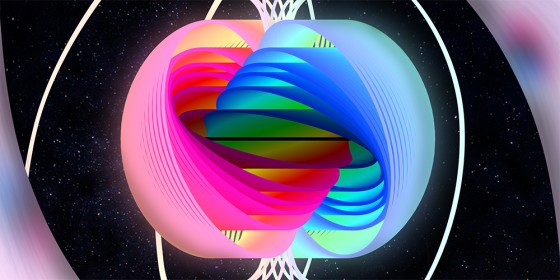
Looking into four-dimensional space with light
Light is used for various purposes in nowadays applications. For example, data can be transmitted with light and nanoscopic structures can be created by light. To enable such applications, light must be structured. To do this, its properties - intensity (brightness), phase (position in oscillation-cycle) and polarization (direction of the oscillation) - are "tailored". Typically, this results in three-dimensionally structured light fields, for example by using a hologram. Going beyond this, now an international team of researchers led by Prof. Dr. Cornelia Denz of the University of Münster and Prof. Dr. Mark Dennis of the University of Birmingham (United Kingdom) has developed a method for structuring light in such a way that a projection from four-dimensional space is created. The results have now been published in the journal Nature Communications.
The team first predicted the complex light structure theoretically (mathematically) and then realized and measured it experimentally. The structure is called Hopfion, named after the German-Swiss mathematician Heinz Hopf. In simplified terms, it looks like countless rings lying inside each other and its projection into 3d space can be compared to the projection of the three-dimensional earth onto a two-dimensional map. In contrast to this, however, with the Hopfion a part of the four-dimensional space is transferred into the three-dimensional space. This means: From the measurements in the three-dimensional space, conclusions can be drawn about the properties of the fourth dimension.
The search for four-dimensional light fields is keeping the optics community busy because, for example, light structured in this way would provide a way to transmit data faster. "The fourth dimension is a mathematical construction. We cannot spatially imagine four dimensions with our senses," says physicist Ramon Droop of WWU Münster, one of the study's first authors.

The team also developed a new imaging method that can spatially resolve the properties of light associated with the four dimensions. To do this, the group uses a method similar to tomography of measuring two-dimensional slices, which are then assembled to form three-dimensional space. It is then possible to calculate exactly which part of the four-dimensional space is mapped.
"Based on these research results, new types of laser beams could be developed in the future to make data communications more secure. The arrangement of nanostructures could be made more versatile and simpler, and material processing more precise," Cornelia Denz gives an outlook.
Original publication
Danica Sugic, Ramon Droop, Eileen Otte, Daniel Ehrmanntraut, Franco Nori, Janne Ruostekoski, Cornelia Denz & Mark R. Dennis (2021): Particle-like topologies in light. Nature Communications 12, 6785; DOI: 10.1038/s41467-021-26171-5
